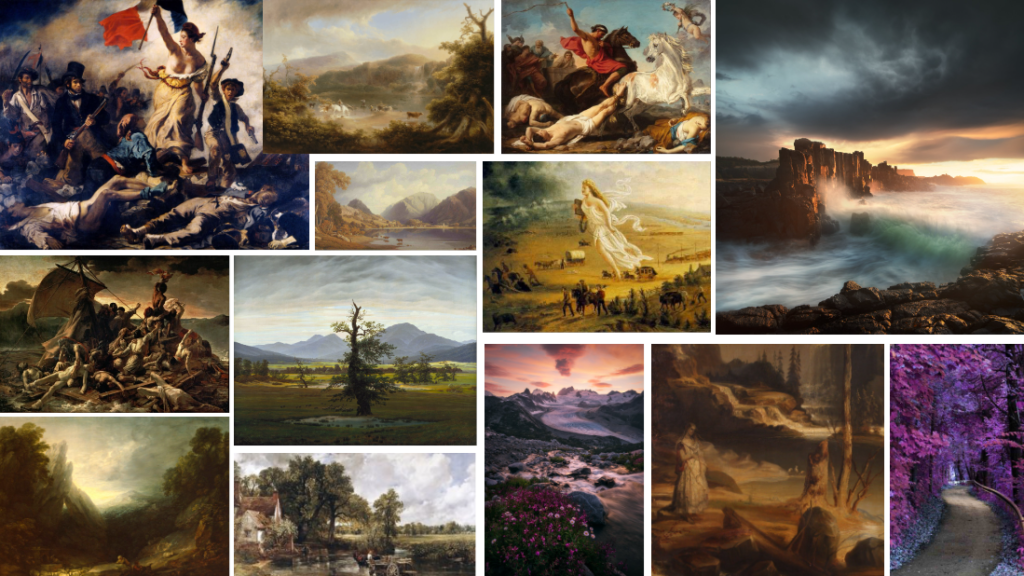Romanticism, also known as the romantic movement or romantic era, is an artistic and intellectual movement that began in Europe towards the end of the 18th century. For most of the Western world it was at its peak during 1800-1850. Romanticism was a reaction to the industrial revolution (1760-1840). It was shown strongly through visual arts, music and literature, it also had a major impact on historiography as well as education. Romanticism was identified by its emphasis on emotion and individualism, as well as glorification of the past and nature. It places emphasis on emotions such as fear, horror or the feeling we get when experiencing the sublimity (great beauty) of nature.

Romanticism can be shown in landscape photography by extreme weather or beautiful landscapes for example a sunset.
Main characteristics of romanticism:
- Emotion and passion
- The critique of progress
- The return to the past
- An awe of nature
- The idealisation of women
- The purity of childhood
- The search for subjective truth
- The celebration of the individual
The Sorrows Of Young Werther
The Sorrows Of Young Werther is a 1744 novel where a young man named Werther, a fictional character depicted by the German Poet named Johann Wolfgang von Goethe, is shown to be in despair after a broken heart due to an unrequited attachment, he later goes on to end his life. This was one of the main novels in the Sturm und Drang period in German literature. This novel then went on to be one of the influences of the romanticism movement due to the perfect example of one of the main characteristics of romanticism, emotion and passion. The novel also is an example of the sublime which is the idea of terror yet beauty.
